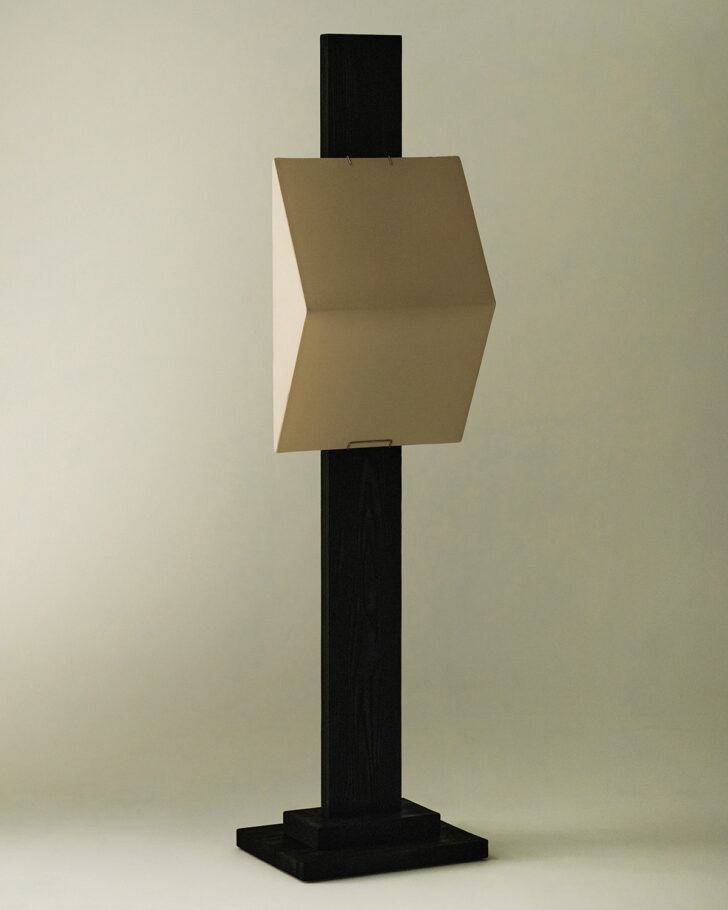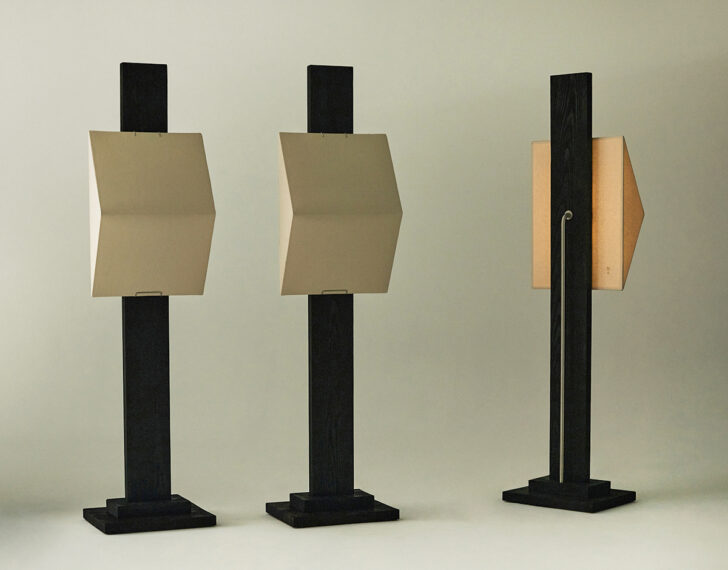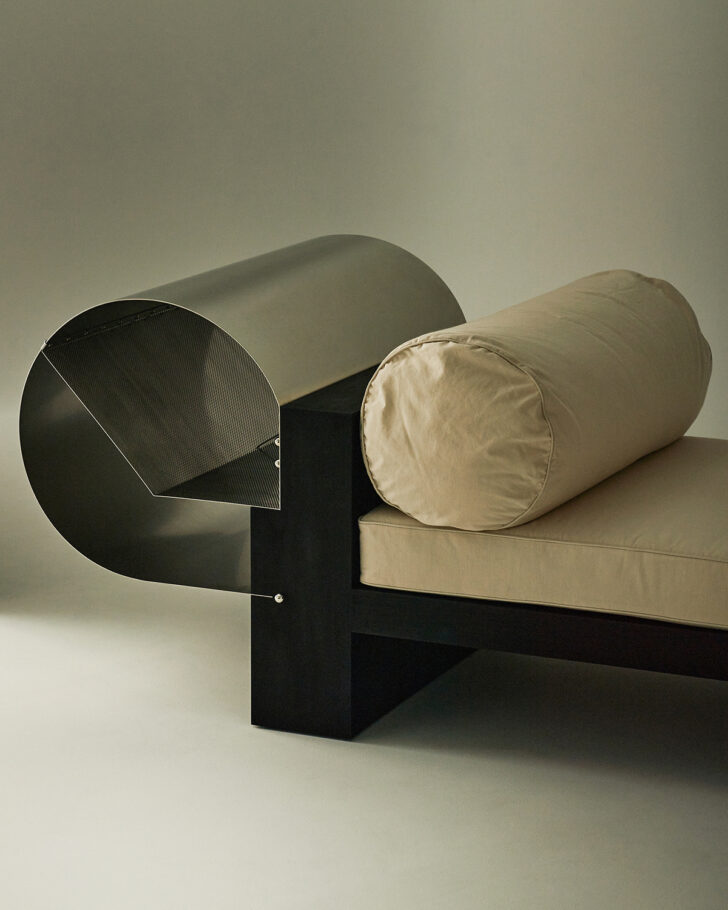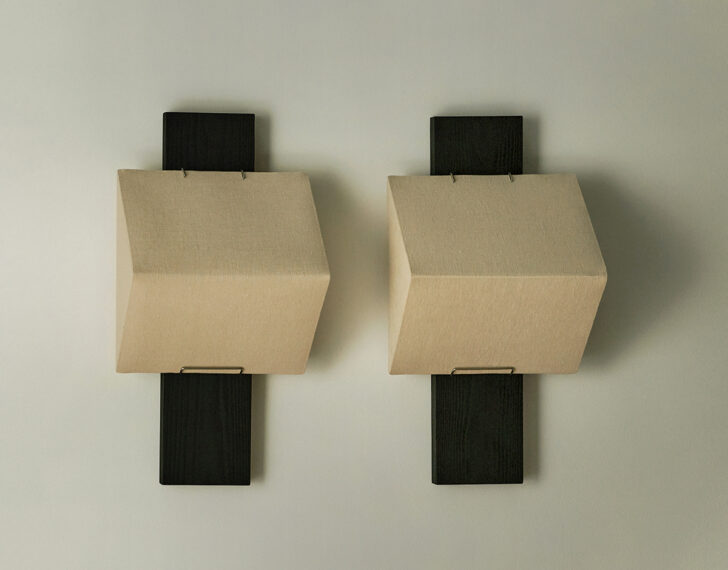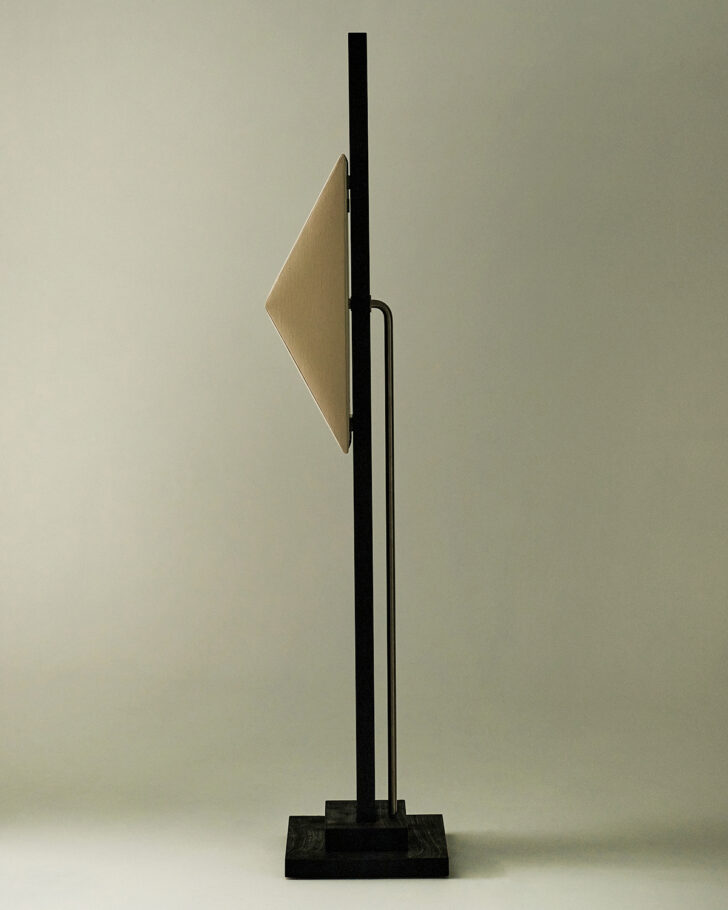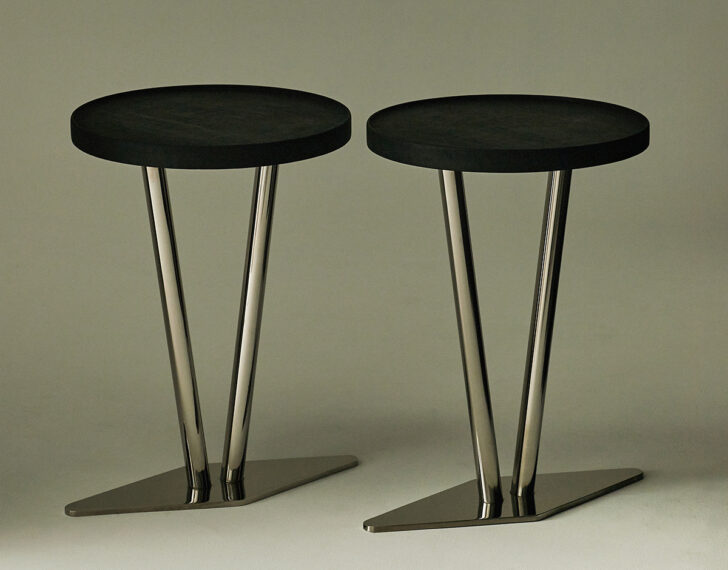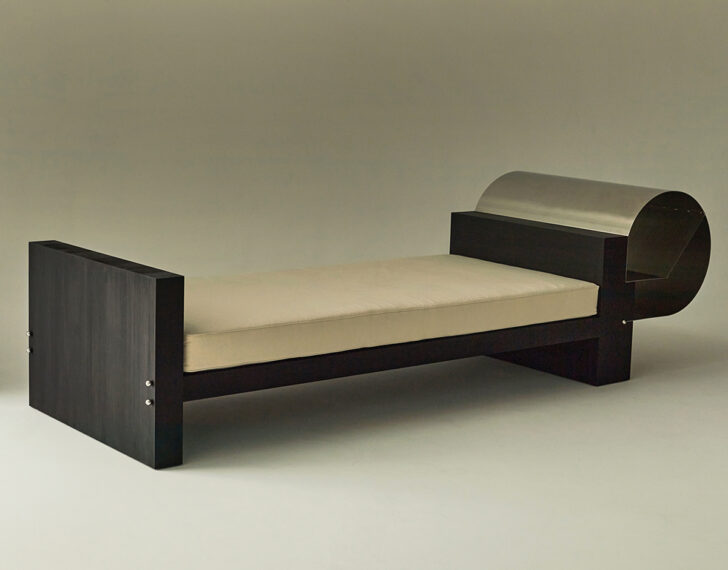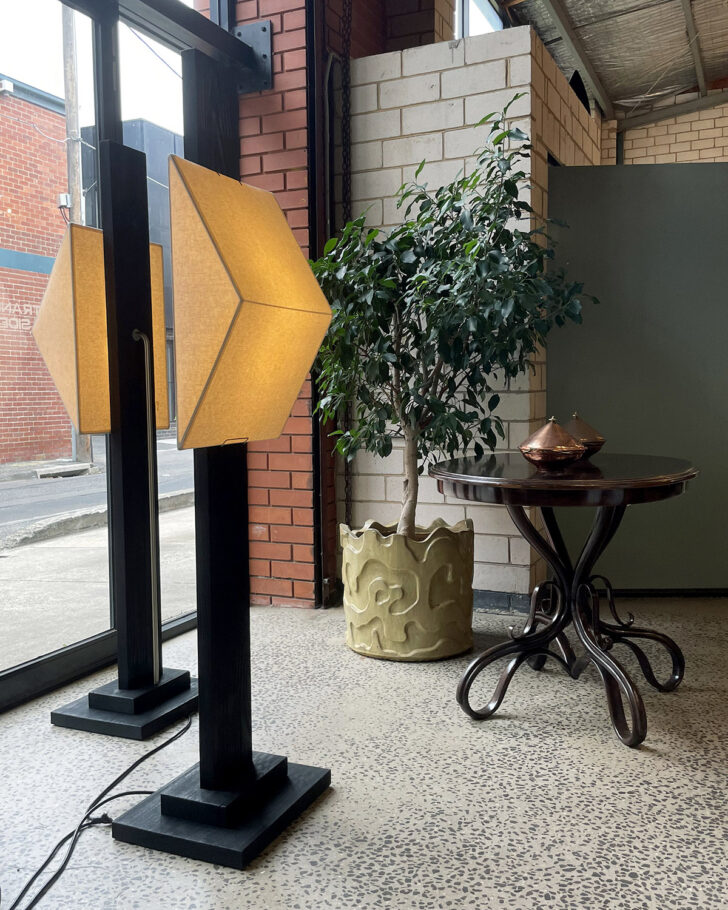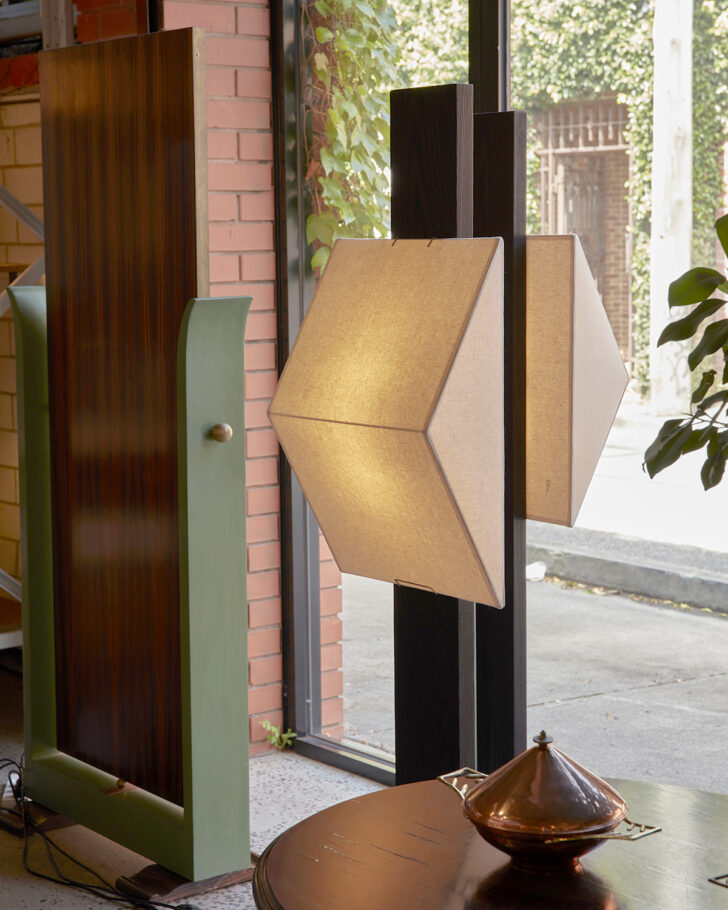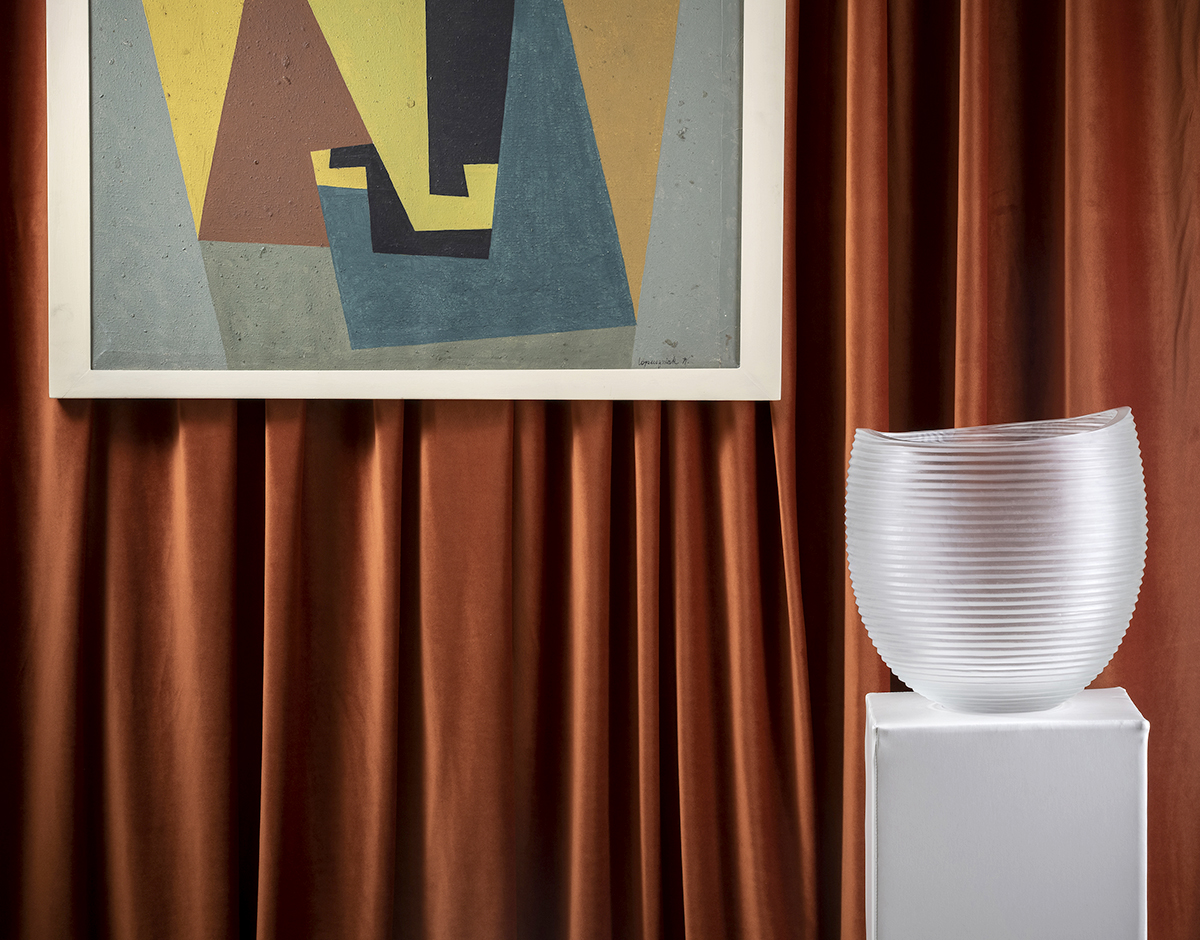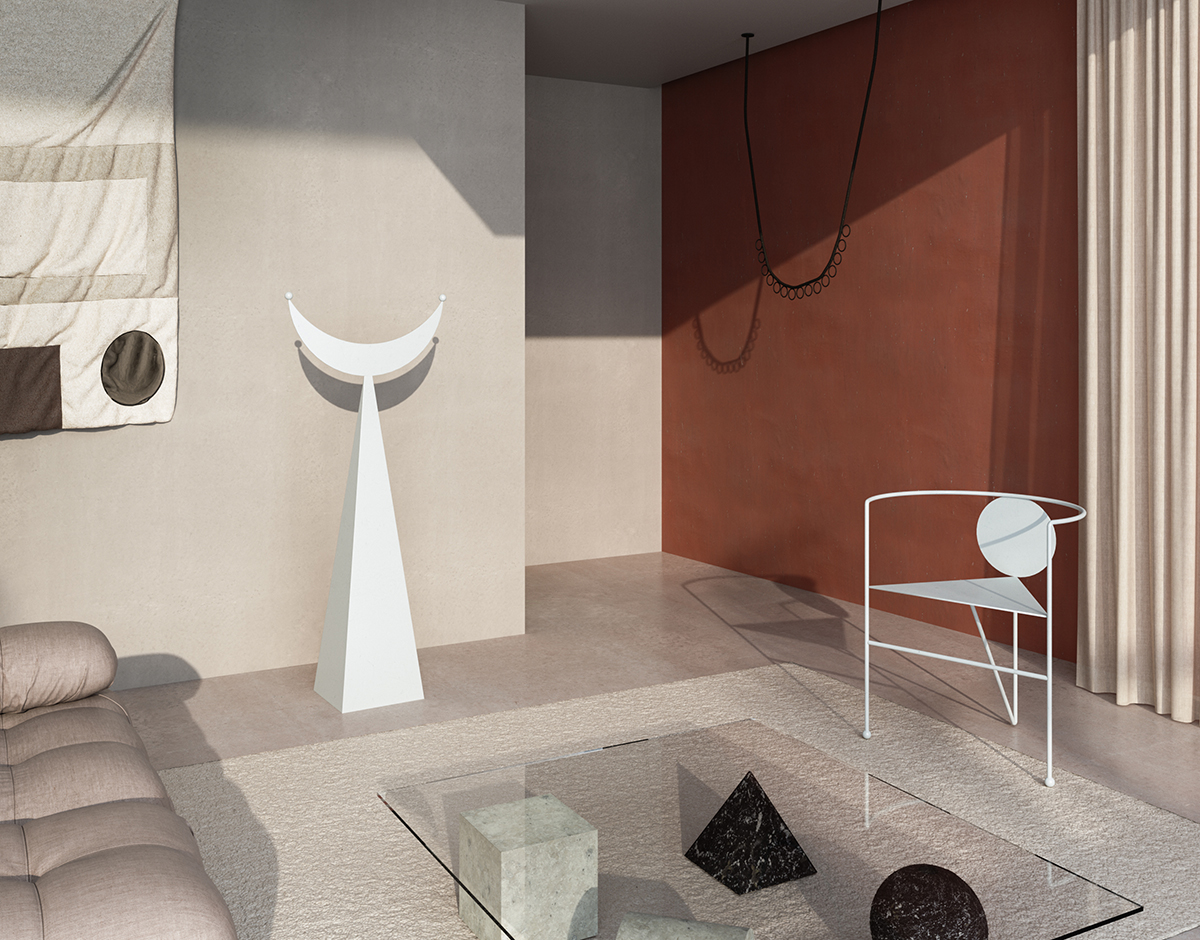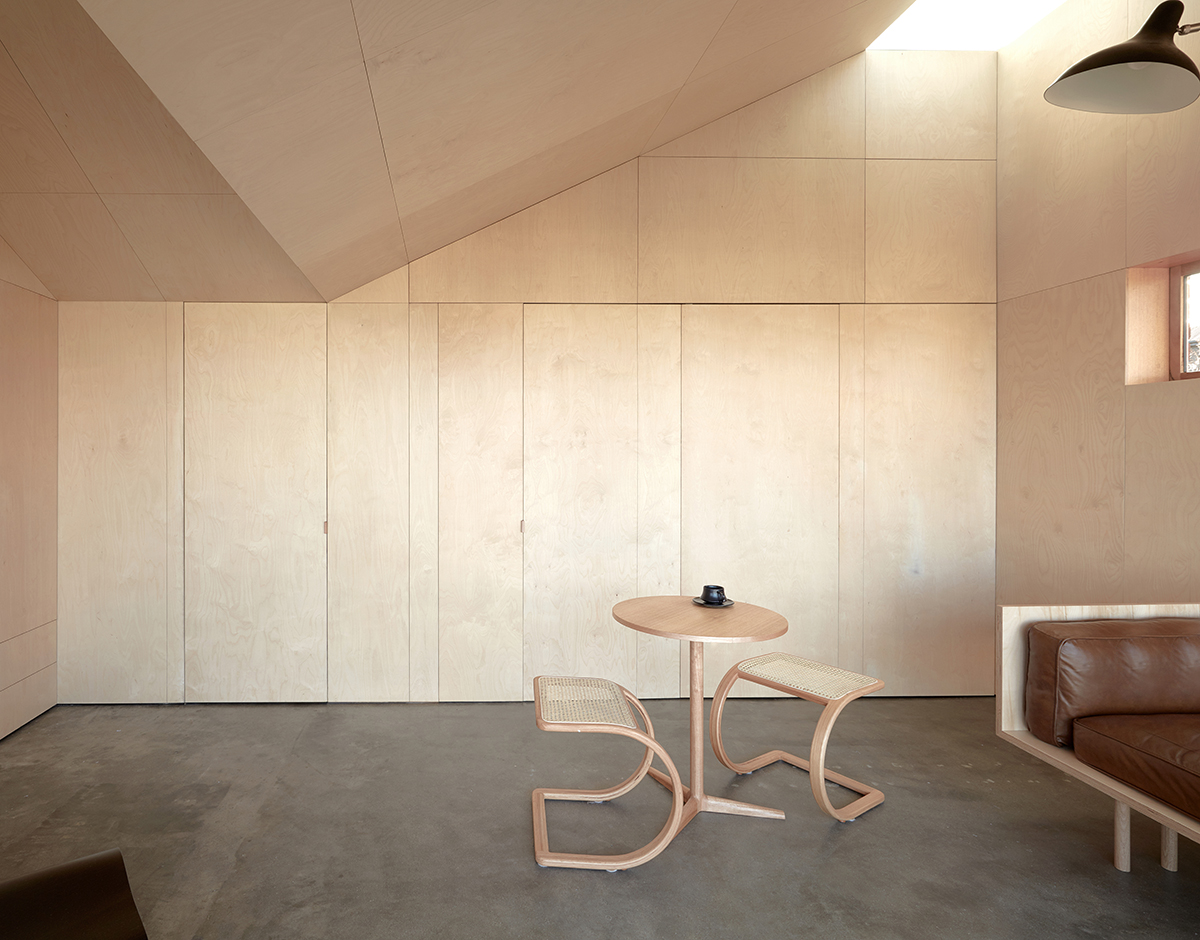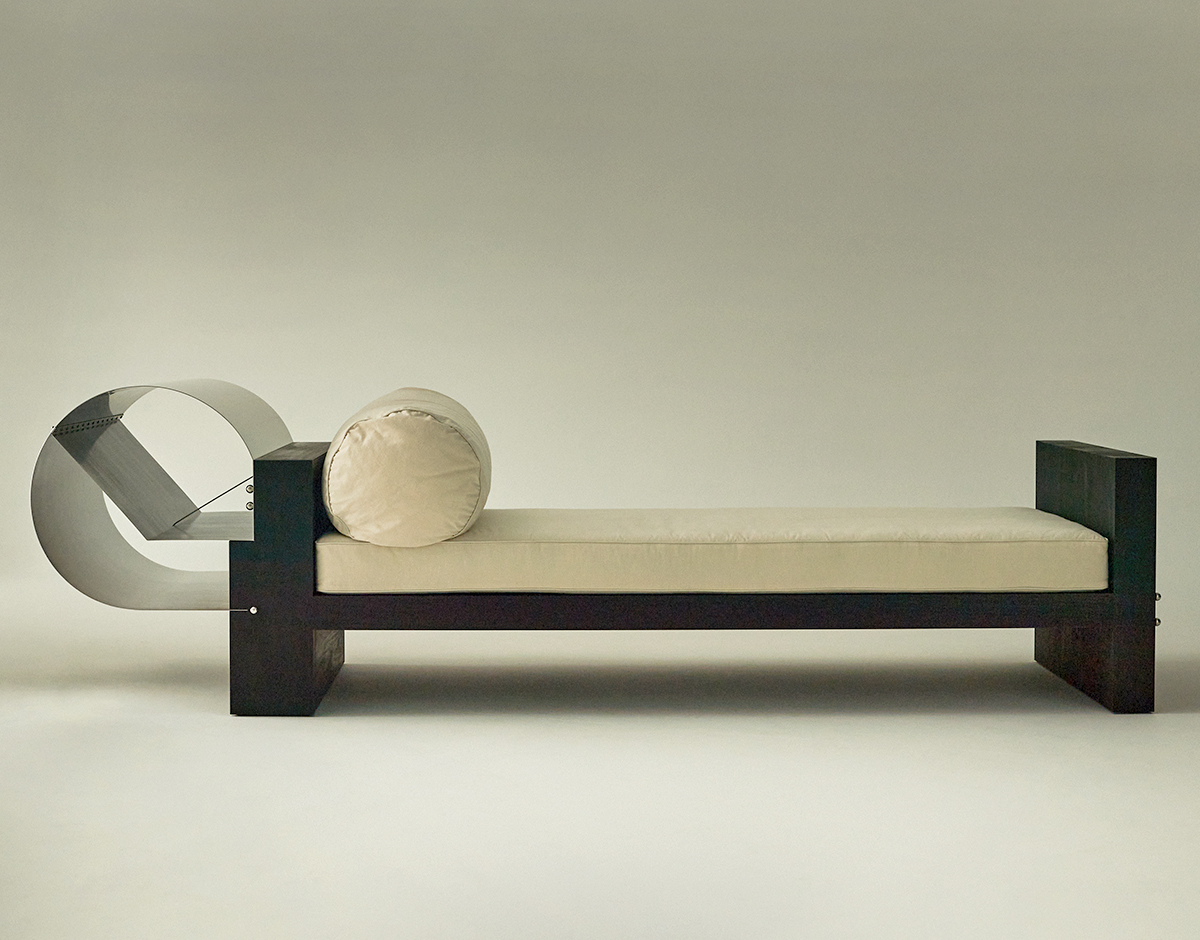
06.29.22
Sighted
Olivia Bossy Doesn’t Care If You Love Her New Collection (Though Obviously We Do!)
If everyone likes Olivia Bossy’s work, then she doesn’t see the point. “There’s a dullness to something globally pleasing,” she says. “There’s always a reason and a story for me, but people can love it, hate it, or feel nothing for their own reasons.” Speaking for ourselves, though, we find the curve of sheet metal manipulated into a spiral, the rich black wood, and the coarse, illuminated fabric of the Sydney-based designer’s first furniture collection to be deeply appealing. Called Objects 2022, it’s an unconventional collection born from an unusual gathering of inspirations: the Australian bushfires, Euclidean geometry (the tension between shapes and the balance that creates), and hours in lockdown spent pondering museum display mechanisms. “Who makes the hooks that hold artifacts in a museum bent perfectly to hold each piece?” Bossy wonders. “Once all the stolen artifacts are returned, there should be a museum of empty museum displays.”
Bossy trained as a graphic designer, which never held much joy for her. Moving beyond the screen, she began slowly teaching herself to design spaces and then the furniture to fill them. “As I’ve started to trust myself more I wanted to produce a collection that would challenge my fabrication knowledge and be a bit more considered,” she says. Over three years, in between other projects, Bossy developed the standing lamp in this collection, starting with an efficient and beautiful hook system for the angular lampshade that’s mostly hidden. “It’s not even visible unless you’re installing the light but I’m like a proud parent on the rare occasion someone asks about them,” she shares. When she approached Melbourne furniture dealer Geoffrey Hatty about showcasing her lights with him, he agreed with an encouraging condition: “You need four pieces for a collection.” A daybed and tables followed.
When she first presents her drawings to fabricators, Bossy is often met with initial resistance about whether they’ll work. But through a series of trials, satisfying outcomes arise. “No one thought that the side table would be stable but the gallery now has crystal vases on them,” she says. “Things go wrong but it’s usually an evolving and curable crisis. With this particular collection I had some of the most skilled joiners around and hanging out with them, working things out was a huge privilege.” Presented in an edition of three, each daybed is somewhat unique, offering distinctions from wrestling the metal into a curve. “Metal is new for me so I now know that it can’t be fully tamed and has ideas and memories of its own.” The Tasmanian Blackwood used for the daybed and tables is a response to the wild fires, receiving its charred look through a labor-intensive process of ebonizing. “The pieces are given time no one has anymore,” Bossy says. Each piece is the outcome of considerable research and learning from the materials and the makers — or, as Bossy writes, “making things carefully with good people”.
When Bossy thinks of the hundreds of hours of joy spent making a piece, she wonders if that lives in its bones and seeps into the everyday life of whoever ends up living with it. “The world seems fairly hellish sometimes and I regularly question what the point is of what I am doing,” she says. “Maybe for a small number of people, lying back on a bed with a giant roll of steel holding some books brings a certain amount of happiness. A good friend of mine, who I originally designed the standing lamp for, told me that his one-year-old son runs his nail down the shade of it every night before bed staring up at it like, ‘What the hell is this?’ before switching it off. That’s enough for me.”
